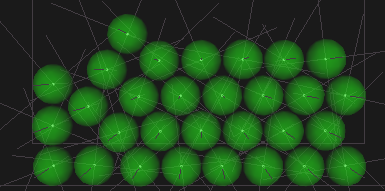Experimental tests
A simple experimental test of evaporation of wet granular slope was set up. The slope of glass ballotini was prepared with a mean water content equal to W = 1.24%. Then it was placed on an electronic precision balance allowing the measure of mean water content by measuring the weight of the entire glass box device (Figure 1) while a pc-controlled camera recorded the evolution of the slope profile (Figure 2).
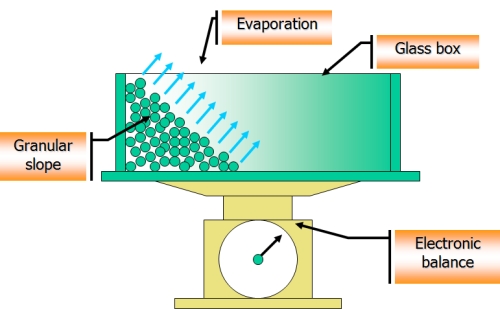
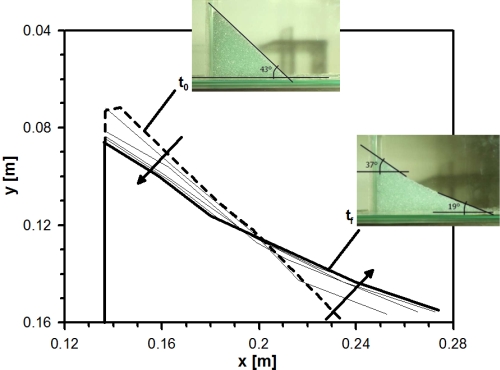
The evaporation rate was assumed to be depth-dependent using the empirical relationship (Blight, 2009):
\(r = r_{max}e^{-c_2d}\)
Some experimental tests with cylinder of different heights were performed in order to estimate the evaporation parameters (Figure 3a and 3b).
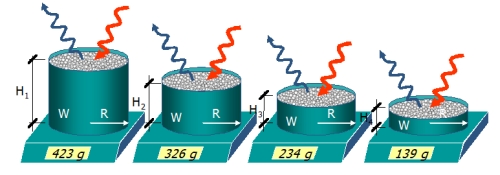
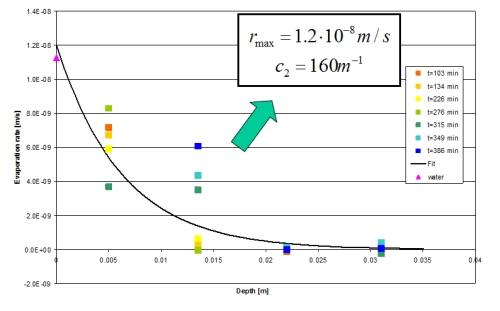
DEM simulations
The granular slope was reproduced with the same geometry, porosity and particle density as the real one, using 11628 balls and the same amount of water homogeneously distributed among all the contacts with the capillary bridges between sphere and walls also being taken into consideration.
Good accordance was observed with experimental results: typical talus-shape profile was reported (Figure 4).
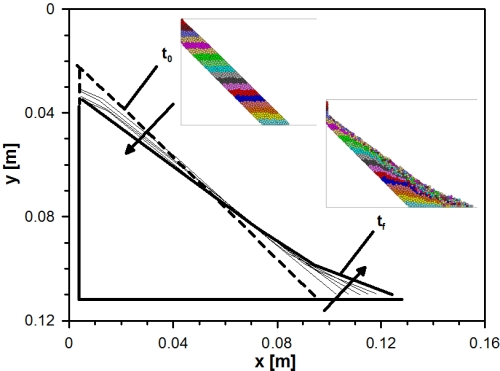
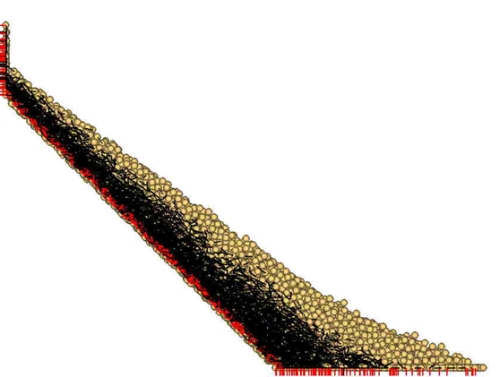
For details see
